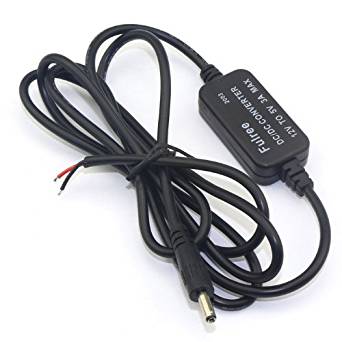You may remember my Window Plan post from April.
Today I drove up to Motion Windows (aka Peninsula Glass) in Vancouver, Washington and picked up my eight side porthole windows, and two rear picture windows. There I met Jeff Kemp (my salesman), Mike (a foreman) and Trent (a fabricator).
Mike was kind enough to give me a tour of the shop. They do everything onsite except for powder coating. They have their own water-jet cutter and a furnace for tempering smaller windows.
Here’s how the extruded aluminum frames are measured and bent to shape, with the help of a custom NC machine that automatically adjusts a “hard stop,” onto which the operator places the end of the extrusion. To me, this is the most amazing part of the process because it ensures that window frame will only have one seam, where the two ends of the extrusion ultimately meet after all the corners are bent to spec. Mike explained that this involves some serious math, which must take into account the deformation characteristics of the metal.
And here’s Trent, the fabricator who did the final assembly on my job. He helped me load the final product in the back of my SUV:
The windows came with seal tape and white screws, and an actual physical cross section of how one should be installed. All ten windows are dual-paned, but the larger rear windows have sliding screens that will face each other symmetrically.
So tomorrow I’ll start measuring the two back windows, one on each door just above the dinette table’s height. Those windows are each 24×24″ square, with 3″ radius corners. The walls are 1-1/4″ thick so I should be able to drill four reference holes from one side, then use my 6″ hole saw to cut out each corner. The inner wall has to line up precisely so since the hole saw is 2″ deep I’ll just use it to help locate tiny reference holes on the opposite side, then mark and cross-check their centered measurements from the inside to make sure the inner outline is square. The windows do have some play in them but the more precise the cut-outs, the better. Once each group of four corner holes are cut, I’ll mark and connect their tangents with my 4″ circular saw. (I can’t use my jigsaw because it cuts deeper than 1-1/4″, so the blade would bounce around on the opposite wall.) Then I’ll repeat for the next window. The side windows should be easier because those walls are 3-1/4″ thick, and that means I can use my jigsaw.
Total cost for ten custom windows: $2,956. But, I’m saving around $2,500 on shipping and labor. Motion Windows does install (replacement) windows for $100 each, but they won’t do any wall-cutting because that’s where all the risk is.






















 Its motor plugs into 120V AC, so I bit the bullet and will run a second Belkin power strip straight up the passenger wall from the helm’s AC panel. I’ll need to plug in the TV and an Apple TV box anyway, then I’ll still have three empty outlets on that side. To wire a power strip like this directly to an AC panel you have to cut off its plug, strip down its three wires, and butt-splice them to another cable. In my case I’m using Ancor 12/3 AWG marine grade wire for AC, along with Wirefy heat-shrink terminal connectors. So the business end of this power strip screws directly into a circuit breaker inside the helm, and the plugs never know what hit them. The two Belkin power strips I’m modifying this way also have their own surge protectors.
Its motor plugs into 120V AC, so I bit the bullet and will run a second Belkin power strip straight up the passenger wall from the helm’s AC panel. I’ll need to plug in the TV and an Apple TV box anyway, then I’ll still have three empty outlets on that side. To wire a power strip like this directly to an AC panel you have to cut off its plug, strip down its three wires, and butt-splice them to another cable. In my case I’m using Ancor 12/3 AWG marine grade wire for AC, along with Wirefy heat-shrink terminal connectors. So the business end of this power strip screws directly into a circuit breaker inside the helm, and the plugs never know what hit them. The two Belkin power strips I’m modifying this way also have their own surge protectors.
 So, I started researching A/C units and came up dry. I really like this new Blizzard NXT model by Dometic. But it’s a whopping 30×40″ and weighs 96 pounds! I only left 21″ between my two columns of solar panels, which means I’d have to un-tape them and move them. Worse, this unit requires a 20A circuit breaker, which means I’d have to replace a 15A module in my AC panel. This unit can be had for around $749, but when you add the required air distribution box and the separate wall thermostat, you’re looking at close to $1,000 with shipping.
So, I started researching A/C units and came up dry. I really like this new Blizzard NXT model by Dometic. But it’s a whopping 30×40″ and weighs 96 pounds! I only left 21″ between my two columns of solar panels, which means I’d have to un-tape them and move them. Worse, this unit requires a 20A circuit breaker, which means I’d have to replace a 15A module in my AC panel. This unit can be had for around $749, but when you add the required air distribution box and the separate wall thermostat, you’re looking at close to $1,000 with shipping.

